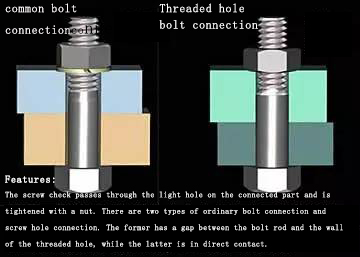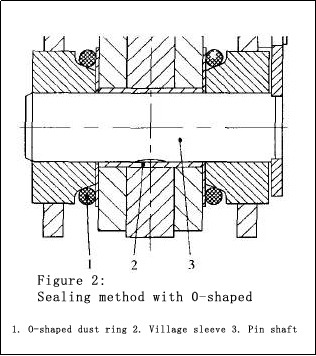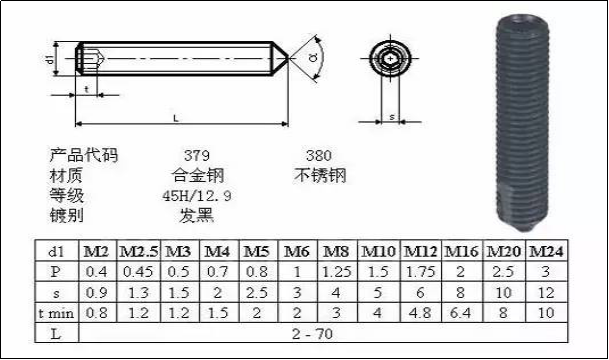Homework preparation
(1) Operation data:
Including general assembly drawings, component assembly drawings, parts drawings, material BOM, etc., until the end of the project, the integrity and cleanliness of the drawings and the integrity of the process information records must be guaranteed.
(2) Work place:
Parts placement and component assembly must be carried out in the specified work place. The place where the complete machine is placed and assembled must be clearly planned. Until the end of the entire project, all work places must be kept neat, standardized and orderly.
(3) Assembly materials:
Before operation, the assembly materials specified in the assembly process must be in place on time. If some inconclusive materials are not in place, the operation sequence can be changed, and then fill in the material reminder form and submit it to the purchasing department.
(4) The structure, assembly technology and process requirements of the equipment should be understood before assembly.
Required materials:
Design drawings:
Mechanical assembly technical specifications typically include design drawings that illustrate the parts to be assembled, their dimensions, tolerances, and any special features or requirements.
Bill of Materials (BOM):
This is a comprehensive list of all the parts required for the mechanical assembly, including their quantities and part numbers.
Material specifications:
The mechanical assembly technical specifications may also include material specifications, such as the type of material to be used for each part, its hardness, density, and other properties.
Assembly procedures:
These are the step-by-step instructions for assembling the parts, including any special tools or techniques required.
Quality control standards:
The mechanical assembly technical specifications may also include quality control standards, such as inspection requirements and acceptance criteria.
Packaging and shipping specifications:
The mechanical assembly technical specifications may also include packaging and shipping specifications, such as the type of packaging materials to be used and the method of shipment.
Basic specification
(1) Mechanical assembly should be assembled in strict accordance with the assembly drawings and process requirements provided by the design department, and it is strictly forbidden to modify the work content or change parts in an abnormal way.
(2) The cnc machining metal parts to be assembled must be the ones that pass the inspection of the quality inspection department. If any unqualified parts are found during the assembly process, they should be reported in time.
(3) The assembly environment is required to be clean without dust or other pollution, and parts should be stored in a dry, dust-free place with protective pads.
(4) During the assembly process, the parts shall not be bumped, cut, or the surface of the parts shall be damaged, or the parts shall be obviously bent, twisted or deformed, and the mating surface of the parts shall not be damaged.
(5) For parts that move relatively, lubricating oil (grease) should be added between the contact surfaces during assembly.
(6) The matching dimensions of the matching parts should be accurate.
(7) When assembling, parts and tools should have special placement facilities. In principle, parts and tools are not allowed to be placed on the machine or directly on the ground. If necessary, protective mats or carpets should be laid on the place where they are placed.
(8) In principle, stepping on the machine is not allowed during assembly. If stepping is required, protective mats or carpets must be laid on the machine. Stepping on important parts and non-metallic parts with low strength is strictly prohibited.
Join method
(1) Bolt connection
A. When tightening the bolts, do not use adjustable wrenches, and do not use more than one same washer under each nut. After the countersunk screws are tightened, the nail heads should be embedded in the machine stainless steel cnc parts and must not be exposed.
B. In general, threaded connections should have anti-loose spring washers, and the method of tightening symmetrical multiple bolts should be tightened gradually in a symmetrical order, and the strip connectors should be tightened symmetrically and gradually from the middle to both directions.
C. After the bolts and nuts are tightened, the bolts should expose 1-2 pitches of the nuts; when the screws do not need to disassemble parts during fastening of the moving device or maintenance, the screws should be coated with thread glue before assembly.
D. For fasteners with specified tightening torque requirements, a torque wrench should be used to tighten them according to the specified tightening torque. For bolts with no specified tightening torque, the tightening torque can refer to the regulations in the “Appendix”.
(2) Pin connection
A. The end face of the positioning pin should generally be slightly higher than the surface of the part. After the tapered pin with screw tail is installed in the relevant parts, its big end should sink into the hole.
B. After the cotter pin is loaded into the relevant milled parts, its tails should be separated by 60°-90°.
(3) Key connection
A. The two sides of the keyway of the flat key and the fixed key should be in uniform contact, and there should be no gap between the mating surfaces.
B. After the key (or spline) with clearance fit is assembled, when the relative moving parts move along the axial direction, there must be no unevenness in tightness.
C. After the hook key and wedge key are assembled, their contact area should not be less than 70% of the working area, and the non-contact parts should not be concentrated in one place; the length of the exposed part should be 10%-15% of the length of the slope.
(4) Riveting
A. The materials and specifications of the riveting must meet the design requirements, and the processing of the rivet holes should meet the relevant standards.
B. When riveting, the surface of the riveted parts shall not be damaged, nor shall the surface of the riveted parts be deformed.
C. Unless there are special requirements, there should be no looseness after riveting. The head of the rivet must be in close contact with the riveted parts and should be smooth and round.
(5) Expansion sleeve connection
Expansion sleeve assembly: Apply lubricating grease to the expansion sleeve, put the expansion sleeve into the assembled hub hole, insert the installation shaft, adjust the assembly position, and then tighten the bolts. The order of tightening is bounded by the slit, and the left and right are crossed and symmetrically tightened successively to ensure that the rated torque value is reached.
(6) tight connection
The tapered end and the hole of the set screw with the conical end should be 90°, and the set screw should be tightened according to the hole.
Assembly of linear guides
(1) There must be no dirt on the installation part of the guide rail, and the flatness of the installation surface must meet the requirements.
(2) If there is a reference edge on the side of the guide rail, it should be installed close to the reference edge. If there is no reference edge, the sliding direction of the guide rail should be consistent with the design requirements. After tightening the fixing screws of the guide rail, check whether there is any deviation in the sliding direction of the slider. Otherwise it must be adjusted.
(3) If the slider is driven by a transmission belt, after the transmission belt and the slider are fixed and tensioned, the transmission belt must not be pulled obliquely, otherwise the pulley must be adjusted so that the driving direction of the transmission belt is parallel to the guide rail.
Assembly of sprocket chain
(1) The cooperation between the sprocket and the shaft must meet the design requirements.
(2) The geometric center planes of the gear teeth of the driving sprocket and the driven sprocket should coincide, and the offset must not exceed the design requirements. If not specified in the design, it should generally be less than or equal to 2‰ of the center distance between the two wheels.
(3) When the chain meshes with the sprocket, the working side must be tightened to ensure smooth meshing.
(4) The sag of the non-working side of the chain should meet the design requirements. If it is not specified in the design, it should be adjusted according to 1% to 2% of the center distance between the two sprockets.
Assembly of gears
(1) After the gears meshing with each other are assembled, when the gear rim width is less than or equal to 20mm, the axial misalignment shall not exceed 1mm; when the gear rim width is greater than 20mm, the axial misalignment shall not exceed 5% of the rim width.
(2) The installation accuracy requirements of cylindrical gears, bevel gears, and worm drives should be specified in JB179-83 “Involute Cylindrical Gear Accuracy”, JB180-60 “Bevel Gear Transmission Tolerance” and JB162 respectively according to the accuracy and size of the transmission parts -60 “Worm Drive Tolerance” is confirmed.
(3) The meshing surfaces of the gears shall be lubricated normally according to the technical requirements, and the gearbox shall be filled with lubricating oil to the oil level line according to the technical requirements.
(4) The noise of the gearbox at full load shall not exceed 80dB.
Rack adjustment and connection
(1) The height adjustment of the racks of different sections should be adjusted to the same height according to the same reference point.
(2) The wall panels of all racks should be adjusted to the same vertical plane.
(3) After the racks of each section are adjusted in place and meet the requirements, the fixed connecting plates between them should be installed.
Assembly of pneumatic components
(1) The configuration of each set of pneumatic drive device must be connected in strict accordance with the air circuit diagram provided by the design department, and the connection of valve body, pipe joint, cylinder, etc. must be checked correctly.
(2) The inlet and outlet of the total air intake pressure reducing valve are connected in the direction of the arrow, and the water cup and oil cup of the air filter and lubricator must be installed vertically downward.
(3) Before piping, the cutting powder and dust in the pipe should be fully blown off.
(4) The pipe joint is screwed in. If the pipe thread does not have thread glue, the raw material tape should be wound. The winding direction is clockwise from the front. The raw material tape must not be mixed into the valve. When winding, one thread should be reserved.
(5) The arrangement of the trachea should be neat and beautiful, try not to cross the arrangement, and 90° elbows should be used at the corners. When the trachea is fixed, do not subject the joints to additional stress, otherwise it will cause air leakage.
(6) When connecting the solenoid valve, pay attention to the role of each port number on the valve: P: total intake; A: outlet 1; B: outlet 2; R (EA): exhaust corresponding to A; S (EB) : Exhaust corresponding to B.
(7) When the cylinder is assembled, the axis of the piston rod and the direction of load movement should be consistent.
(8) When using linear bearings to guide, after the front end of the cylinder piston rod is connected to the load, there must be no abnormal force during the entire stroke, otherwise the cylinder will be damaged.
(9) When using a throttle valve, attention should be paid to the type of throttle valve. Generally speaking, it is distinguished by the big arrow marked on the valve body. The one with the big arrow pointing to the threaded end is used for the cylinder; the one with the big arrow pointing to the pipe end is used for the solenoid valve.
Assembly inspection work
(1) Every time the assembly of a component is completed, it must be checked according to the following items. If an assembly problem is found, it should be analyzed and dealt with in time.
A. The integrity of the assembly work, check the assembly drawings, and check whether there are missing parts.
B. For the accuracy of the installation position of each part, check the assembly drawing or the requirements stated in the above specification.
C. The reliability of each connecting part, whether each fastening screw meets the torque required for assembly, and whether the special fastener meets the requirement of preventing loosening.
D. The flexibility of the movement of moving parts, such as whether there is any stagnation or stagnation, eccentricity or bending when the conveyor rollers, pulleys, guide rails, etc. are manually rotated or moved.
(2) After the final assembly, the main inspection is to check the connection between the assembly parts, and the inspection content is based on the “four characteristics” specified in (1) as the measurement standard.
(3) After the final assembly, iron filings, debris, dust, etc. in each part of the machine should be cleaned to ensure that there are no obstacles in each transmission precision turned parts.
(4) When testing the machine, do a good job of monitoring the start-up process. After the machine starts, you should immediately observe whether the main working parameters and moving parts are moving normally.
(5) The main working parameters include the speed of movement, the stability of movement, the rotation of each transmission shaft, temperature, vibration and noise, etc.
Anebon sticks into the basic principle of “Quality is definitely the life of the business, and status may be the soul of it” for big discount custom precision 5 Axis CNC Lathe CNC Machined Part, Anebon have confident that we could offer the high quality products and solutions at resonable price tag, superior after-sales support into the shoppers. And Anebon will build a vibrant long run.
Chinese Professional China CNC Part and Metal Machining Parts, Anebon rely on high-quality materials, perfect design, excellent customer service and the competitive price to win the trust of many customers at home and abroad. Up to 95% products are exported to overseas markets.
Post time: May-03-2023





